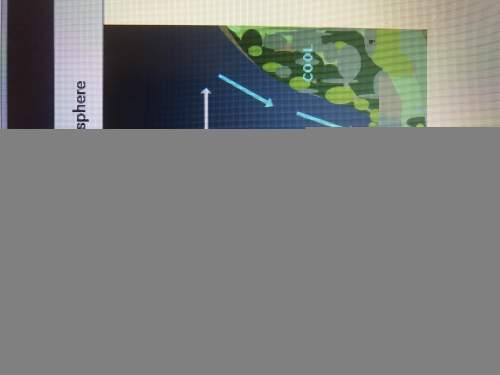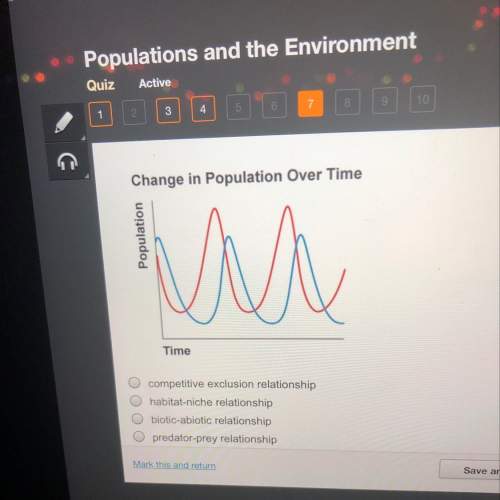
Biology, 24.09.2021 17:40 makrosebud7821
Directions
Now that the lab is complete, it is time to write your lab report. The purpose of this guide is to help you write a clear and concise report that summarizes the lab you have just completed.
The lab report is composed of four sections:
Section I: Experimental Overview
o Provide background information.
o Include the hypothesis(es).
o Summarize the procedures.
Section II: Data and Observations
o Summarize the data you collected in the lab guide.
o Include information from data tables.
o Include any written observations that are relevant.
Section III: Analysis and Discussion
o Discuss any important calculations or formulas used.
o Identify key results, what the results indicate, and any trends in the data.
o Include graphs (if constructed) that display trends in the data.
o Provide possible reasons for any problems with the experiment, or unexpected data.
Section IV: Conclusions
o Identify if the hypothesis(es) was (were) supported or refuted.
o Provide logical reasoning based on data.
o Explain how the experiment could be improved.
To help you write your lab report, you will first answer the questions listed below by reflecting on the experiment you have just completed. Then you will use the answers to these questions to write the lab report that you will turn into your teacher.
You can upload your completed report with the upload tool in formats such as OpenOffice. org, Microsoft Word, or PDF. Alternatively, your teacher may ask you to turn in a paper copy of your report or use a web-based writing tool.
Questions
Section I: Experimental Overview
1. What is the purpose of the lab, the importance of the topic, and the question you are trying to answer?
2. What is your hypothesis (or hypotheses) for this experiment?
3. What methods are you using to test this (or each) hypothesis?
Section II: Data and Observations
4. Locate the data and observations collected in your lab guide. What are the key results? How would you best summarize the data to relate your findings?
5. Do you have quantitative data (numerical results or calculations)? Do you have qualitative data (written observations and descriptions)? How can you organize this date for your report?
Section III: Analysis and Discussion
6. What do the key results indicate?
7. If you constructed graphs, what trends do they indicate in your data?
8. Were there any problems with the experiment or the methods? Did you have any surprising results?
Section IV: Conclusions
9. What do the results tell you about your hypothesis(es)?
10. How do the data support your claim above?
11. If you could repeat the experiment and make it better, what would you do differently and why?
Writing the Lab Report
Now you will use your answers from the questions above to write your lab report. Follow the directions below.
Section I: Experimental Overview
Use your answers from questions 1–3 as the basis for the first section of your lab report. This section provides your reader with background information about why you conducted this experiment and how it was completed. Outline the steps of the procedure in full sentences. It also provides potential answers (your hypothesis/es) relative to what you expected the experiment to demonstrate. This section should be 1–3 paragraphs in length.
Section II: Data and Observations
Use your answers from questions 4–5 as the basis for the second section of your lab report. This section provides your reader with the data from the experiment, in a summarized and concise way. No paragraphs are required for this section, but you do need to include the key data and observations from which you will generate your analysis and discussion. This section is objective.
Section III: Analysis and Discussion
Use your answers from questions 6–8 as the basis for the third section of your lab report. This section provides your reader with your interpretation of the data set. You will also give an example of any calculations or formulas you used to analyze your data. Also, you will want to include any graphs that you made and interpret them for the reader.
If you did construct graphs, your Student Guide included information on which graphs to construct. Graphs should have the following:
a. Appropriate titles
b. Appropriate labels for each axis
c. Appropriate scales for each axis
d. Correct units for the data
Complete a rough sketch of each graph. Explain in one or two sentences what trend the reader should observe in each of your graphs.
Mention any problems, unusual or unexpected data, or other factors with the experiment here, and suggest possible causes. This section can be somewhat subjective, unlike Section II, because you are free to include your personal interpretations or even speculation if it adds constructive, reasonable insight to the discussion.
This section is variable in length, and should likely be the longest part of your report.

Answers: 3
Another question on Biology

Biology, 21.06.2019 17:00
What word is used to describe differences of individual organisms
Answers: 2


Biology, 22.06.2019 22:50
Color blindness is a recessive trait. the gene for color blindness is on the x-chromosome. the family tree below shows the trait of color blindness. theonly unknown is the father in the first generation.
Answers: 1

Biology, 22.06.2019 23:50
Unlike mendel's pea plants,humans can have a variety of heights,not just tall or short.what does this mean for human height? a.height is controlled by one gene b.height is controlled by more than one c.height is not genetic d.height is solely determined by whether or not you eat your vegetables
Answers: 2
You know the right answer?
Directions
Now that the lab is complete, it is time to write your lab report. The purpose of this...
Questions




Biology, 19.11.2020 19:00


English, 19.11.2020 19:00


Biology, 19.11.2020 19:00

Mathematics, 19.11.2020 19:00

Mathematics, 19.11.2020 19:00

Mathematics, 19.11.2020 19:00


Mathematics, 19.11.2020 19:00

Mathematics, 19.11.2020 19:00










